If you’re starting a new business or looking to expand an existing one, there are always a couple of questions that pop up.
Like:
- What will your business, strategic, sales, and marketing plans look like?
- What’s the market like?
- Are there any industry growth prospects and risks?
- Which investment opportunities are there? Etc.
Finding answers to all these questions is the fundamental part of something called industry research. It refers to a set of actions used to assess products, processes, and services within a specific industry.
And it doesn’t need to be as difficult as it sounds.
💡 Read Consumer Behavior Analysis 101: How to Learn More About Your Customers
With a couple of proven methods, you can get a ton of useful information that will help you make better business decisions.
In this blog, we’ll show you precisely that – how to do industry research with ease and gain insights that can give you the upper hand over your competitors.
Explore Google Trends
Google Trends is a powerful tool that allows you to explore the popularity of search queries over time, providing valuable insights into consumer interests and behavior.
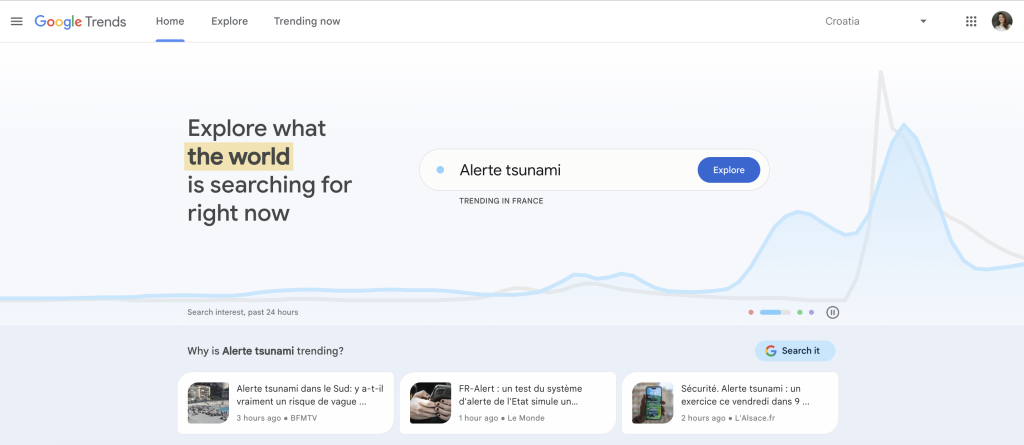
It’s like having an assistant that collects everything people google and categorizes this info by topic, geographical area, and time. The benefits? When you know what people are interested in, it’s easier to provide a product/service that will sell.
To use the full potential of Google Trends, learn to input relevant keywords, filter data by location and timeframe, and compare multiple search terms. After that, as trends emerge, it’s essential to decipher their implications for your industry. That’s where interpretation comes into play.
Read How AI Is Changing The Way We Predict Consumer Behavior
How to use Google Trends for industry research
Imagine you’re a fitness entrepreneur aiming to launch a line of health supplements. By turning to Google Trends, you can find out more about the current landscape of health and wellness trends. For starters, you can enter key terms such as “protein supplements,” “plant-based diets,” and “home workouts” to assess their popularity over the past year.
After that, Google Trends will not only provide a graphical representation of the search interest but also offer related queries and regional interest. If you observe a consistent upward trajectory for “plant-based diets” and a surge in searches for “home workout equipment,” you can see that there’s a growing interest in at-home fitness solutions and plant-based nutrition. Consequently, armed with this knowledge, you can tailor your product offerings to align with the current demands of the fitness market.
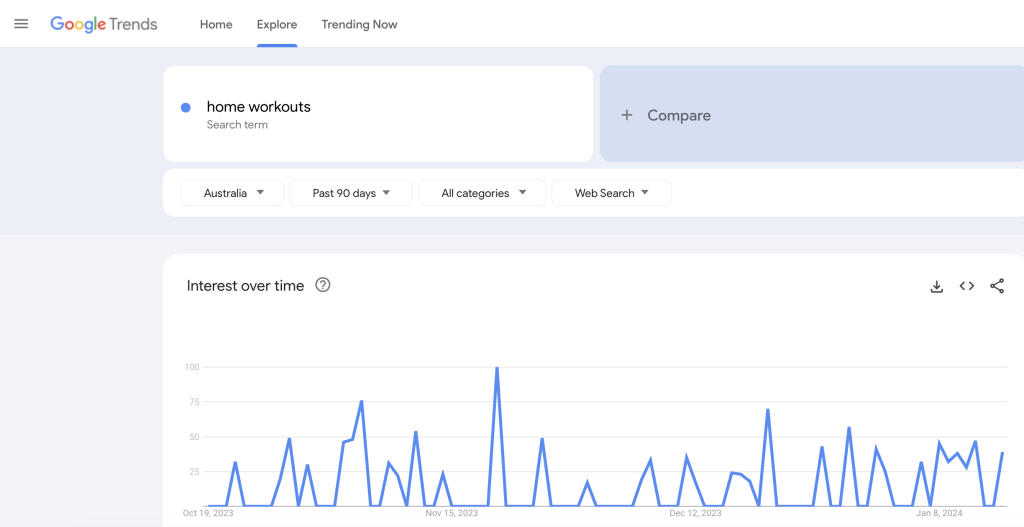
In addition, the regional data can help you target specific locations where these trends are most prominent, optimizing your marketing efforts. Google Trends, in this scenario, becomes an indispensable tool for making informed decisions and staying ahead in the competitive fitness industry.
Conduct Competitor Analysis
There are a couple of reasons why it’s important to analyze your competitors. Competitor analysis provides a comprehensive understanding of the market, identifies potential gaps in your offerings, and reveals strategic opportunities. Ultimately, it’s like having a playbook for success.
To conduct a thorough competitor analysis, start by identifying key competitors in your industry and scrutinize their strengths, weaknesses, opportunities, and threats (SWOT analysis). Further on, explore their marketing strategies, customer feedback, and product/service differentiation. In this phase, utilize tools like social media monitoring and competitor benchmarking to gain a holistic view.
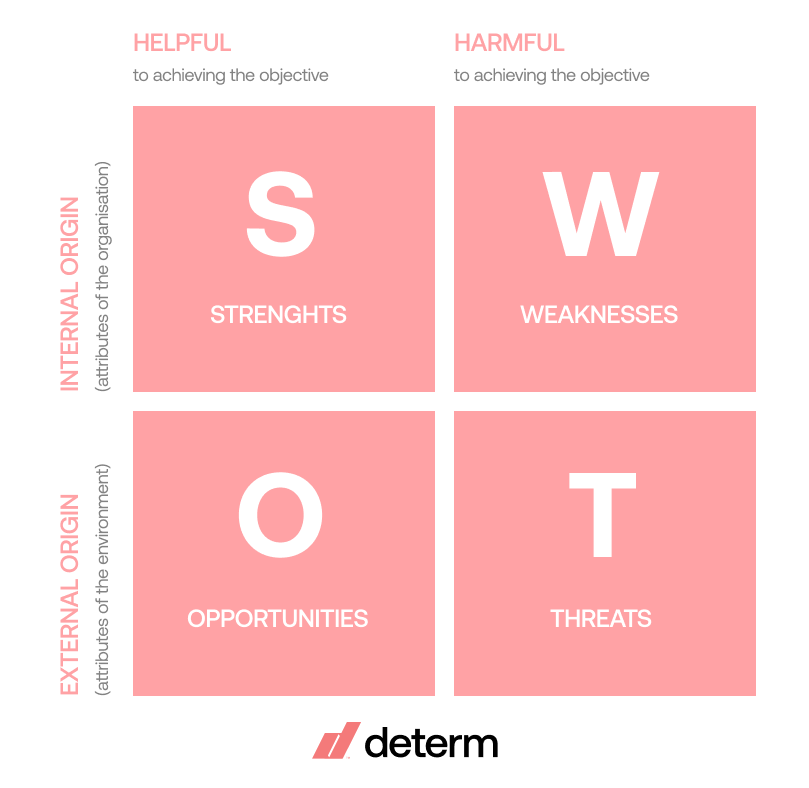
By understanding what works for your competitors and where they fall short, you can refine your own business strategy, identify unique value propositions, and position yourself strategically in the market. In the end, competitor analysis is not just about keeping pace. It’s about learning from the best and leveraging that knowledge to carve your path to success.
How to conduct competitor analysis with a media monitoring tool
Thanks to media monitoring tools, conducting competitor analysis has evolved beyond traditional methods. These tools offer a dynamic lens into your competitors’ online presence, providing info in real-time.
A media monitoring tool like Determ allows you to track your competitors across more than 100 million online platforms, including forums and social media. Start by setting up specific keywords related to your industry, competitor names, and relevant product or service terms. For instance, if you’re a skincare company, you could track brands like La Roche Posay, CeraVe, Vichy, etc.
Determ allows you to check how all of these stand against each other in a couple of very simple steps. Simply set the brands on monitoring, go to Determ’s predefined report called Competitive Analysis, choose the brands you’d like to compare, and watch as the data presents itself in the form of very clear charts.
In this way, you can analyze the sentiment surrounding your competitors’ brand mentions, identify trending topics in their discussions, and track the effectiveness of their marketing campaigns. By doing so, you can identify areas where your competitors excel and discover untapped market niches.
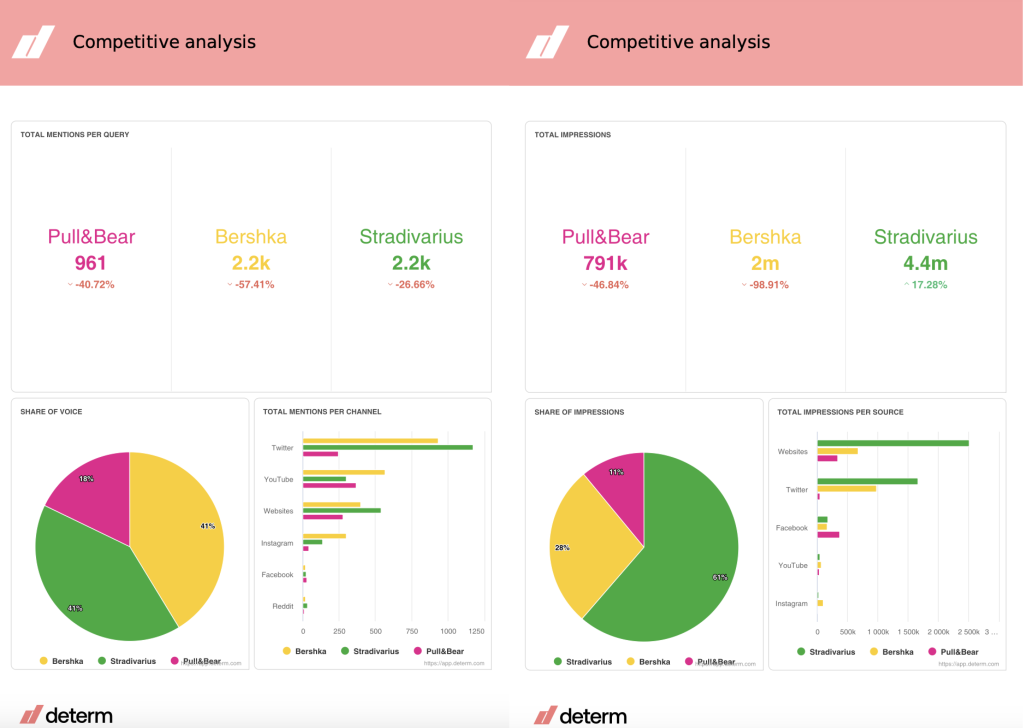
Read A Step-By-Step Tutorial for Writing a Competitor Analysis Report for Your Company
Study Industry Reports
Industry reports usually serve as sources of expert knowledge. These reports offer a comprehensive overview of market trends, forecasts, and key players, providing insights into the intricacies of a specific industry.
For example, if you’re a technology startup, accessing reports from renowned research firms like Gartner or Forrester can provide crucial data.
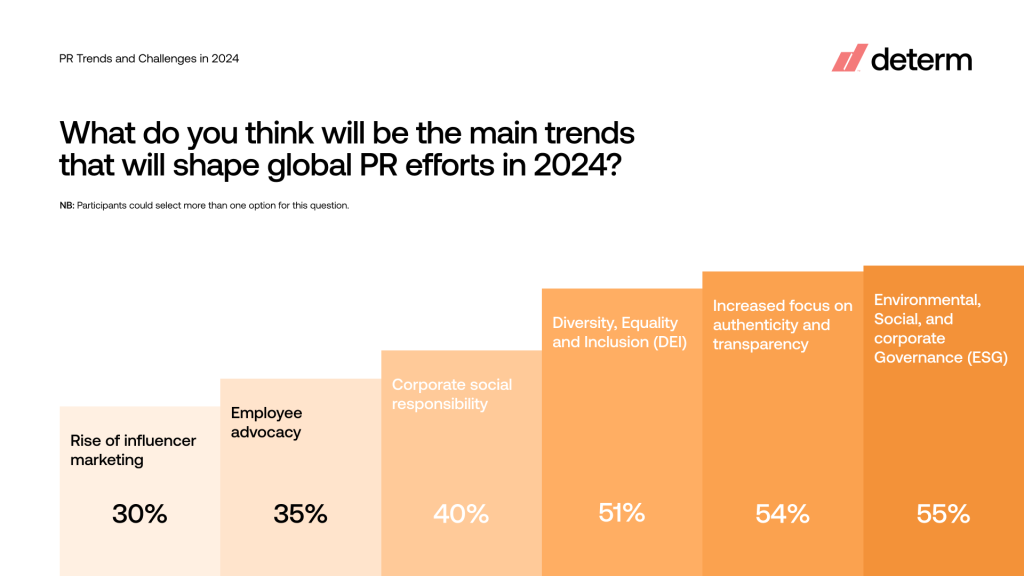
To tap into this expert knowledge, start by identifying reputable sources such as market research firms, industry associations, and government agencies that regularly publish insightful reports. Also, leverage online databases and libraries, and subscribe to industry newsletters to stay on top of the latest releases.
Finally, analyze market dynamics, consumer behavior trends, and emerging technologies to gain a nuanced understanding of where the industry is headed.
Read PR Statistics 2024: Trends and Challenges in PR
Use Social Media Listening
Social media listening, also known as social media monitoring or brand monitoring, refers to the systematic process of tracking and analyzing online conversations, mentions, and feedback across various social media platforms.
The primary goal of social media listening is to gain valuable insights into consumer sentiments, opinions, trends, and discussions related to a brand, product, industry, or specific topics. And it’s done through social media listening tools like Determ. This is how it works.
Let’s say you’re a cosmetics company aiming to launch a new skincare line. Through social media listening, you monitor conversations about your industry, competitors, etc. And let’s say you notice a surge in discussions about sustainable and eco-friendly beauty products on Instagram and Twitter. By exploring hashtags like #CleanBeauty and #SustainableSkincare, you identify a growing consumer interest in environmentally conscious choices within the beauty industry.
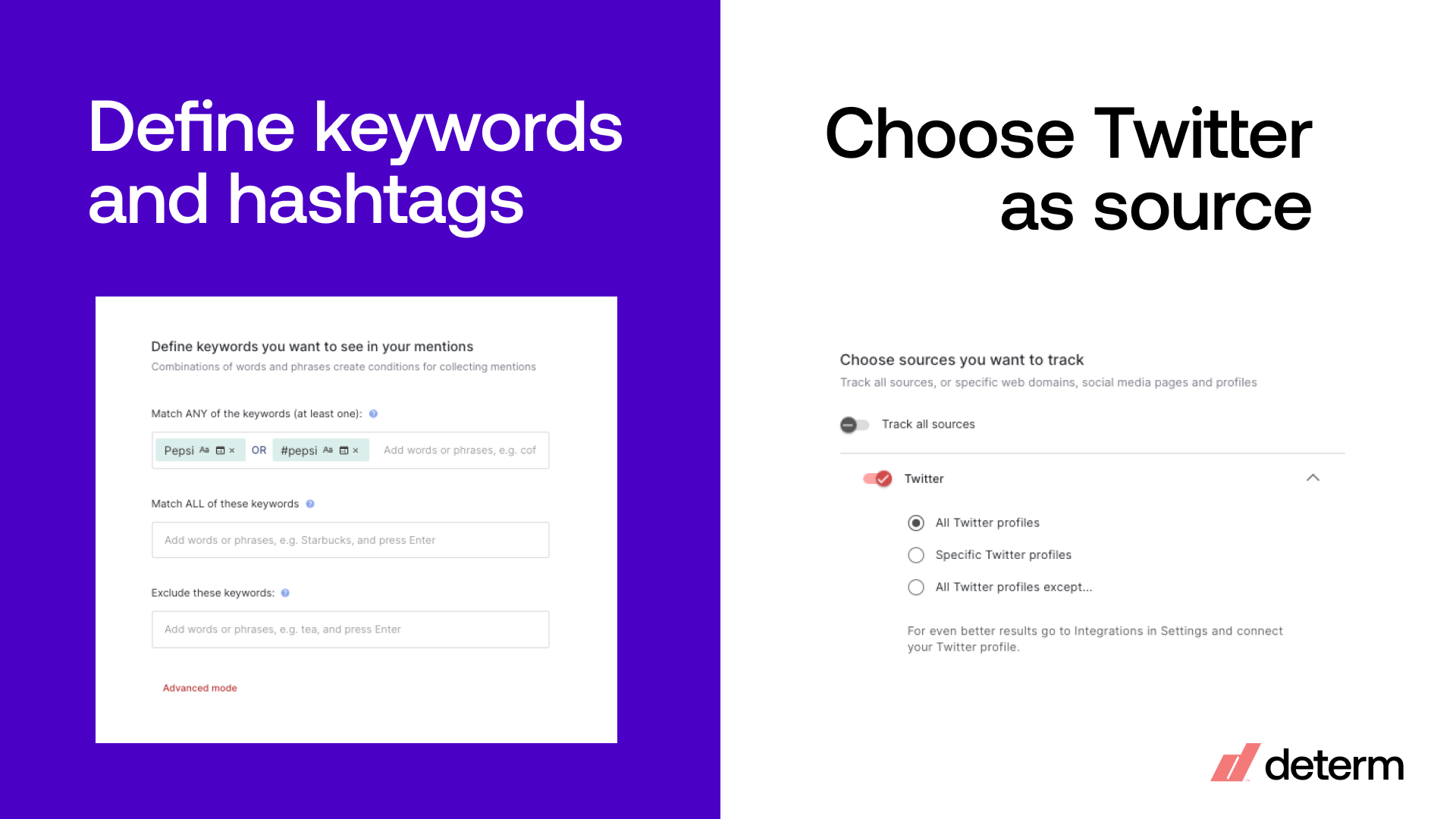
Furthermore, through sentiment analysis, you notice positive sentiments around products with natural ingredients and cruelty-free practices. All of this can bring you to one important decision: to formulate your new skincare line with a strong emphasis on sustainability, using eco-friendly packaging and cruelty-free ingredients.
In addition, you can identify influencers and key opinion leaders in the beauty community who align with the values of your upcoming product line.
Read 7 Social Media Monitoring Examples To Take Inspiration From
Engage In Networking And Interviews
One of the ways to do industry research is through networking and personal contact. Effective networking involves attending industry events, engaging with professionals on social platforms, and participating in relevant forums. Establishing a robust network not only increases your chances of success but also provides access to insider knowledge and potential collaborators.
In addition, conducting insightful interviews adds a qualitative dimension to your research. By directly engaging with industry experts, practitioners, or key stakeholders, you can get nuanced insights that may not be available through other methods. Develop a strategic approach to interviews, formulating thoughtful questions and actively listening to glean valuable perspectives.

Incorporating networking and interviews into your industry research tactics transforms it from a data-driven exercise to a personalized journey. This approach not only enriches your understanding of market dynamics. It also fosters relationships that can be vital in shaping the trajectory of your business.
Read Market Research Process in 4 Steps
Conclusion
We’ve shared five strategies for mastering industry research. From Google Trends and industry reports to social media listening and personalized insights through networking, each method offers a unique perspective for staying ahead.
Adaptability is key—embrace the gained insights, integrate them into your decisions, and stay tuned to your dynamic industry. With a blend of data-driven approaches and expert insights, you’re set to propel your business toward sustained success.
If you’d like to find out how Determ can help you in your industry research, book a demo with one of our experts.


